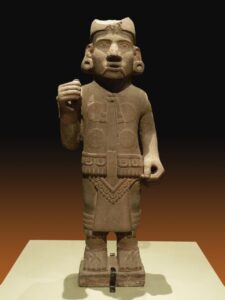MOST ANCIENT TRIBES IN WORLD
Echoes of the Past: Unveiling the Mysteries of the World’s Oldest Tribes
Introduction
Human history is a tapestry woven with the threads of diverse cultures, each contributing to the rich fabric of our collective past. Among these cultural enclaves are the world’s most ancient tribes, whose stories resonate across time, echoing the struggles, triumphs, and traditions that have shaped our global heritage. In this exploration, we embark on a journey to unravel the mysteries surrounding some of the oldest tribes in the world, shedding light on their unique customs, beliefs, and the indomitable spirit that has allowed them to endure through millennia.
The San People of Southern Africa
Our journey begins in the vast expanse of Southern Africa, where the San people, also known as Bushmen or Basarwa, have left an indelible mark on history. With a lineage stretching back over 20,000 years, the San are believed to be one of the oldest surviving tribes on Earth. Their nomadic lifestyle, characterized by an intimate connection with the land, involves hunting and gathering, as well as an intricate knowledge of the region’s flora and fauna.
The San people’s cave paintings, found in the Drakensberg Mountains, offer a glimpse into their spiritual world and reveal a deep reverence for the natural elements that sustain them. Despite facing challenges from external forces and modernization, the San persist in maintaining their unique way of life, symbolizing the resilience of ancient traditions in the face of an ever-changing world.
The Ainu of Japan
Venturing eastward, we encounter the Ainu, an indigenous people whose roots can be traced back to the islands of Japan. The Ainu have inhabited Hokkaido, the northernmost of Japan’s main islands, for thousands of years. Characterized by their distinctive language, customs, and physical features, the Ainu have endured a complex history marked by colonization and assimilation.
The Ainu’s spiritual beliefs are deeply intertwined with nature, with gods inhabiting natural elements such as rivers, mountains, and animals. Traditional Ainu ceremonies, including rituals involving bears, underscore their harmonious relationship with the environment. Despite their resilience, the Ainu have faced challenges to their cultural identity, making efforts to preserve and revitalize their heritage crucial in ensuring the survival of this ancient tribe.
The Sami of Northern Europe
Our exploration continues to Northern Europe, where the indigenous Sami people have thrived in the Arctic regions of Norway, Sweden, Finland, and Russia for thousands of years. With a distinct cultural identity rooted in reindeer herding, fishing, and handicrafts, the Sami showcase the adaptability and resourcefulness required to survive in the harsh Arctic climate.
The Sami’s relationship with nature is deeply spiritual, as reflected in their traditional yoik songs and shamanistic practices. Despite facing challenges related to land rights and cultural preservation, the Sami have actively engaged in the revitalization of their language and traditions. Their resilience underscores the importance of acknowledging and respecting the diversity of the world’s ancient tribes.
The Maori of New Zealand
Crossing the vast Pacific Ocean, we arrive in New Zealand, home to the Maori, a Polynesian people with a history spanning over a thousand years. The Maori arrived in Aotearoa, the Maori name for New Zealand, in large ocean-faring canoes, bringing with them a rich cultural heritage that includes intricate wood carvings, traditional tattooing (ta moko), and the haka, a powerful ceremonial dance.
The Maori maintain a deep connection to their ancestral lands and the spiritual realm, as exemplified by the importance of marae (communal meeting grounds) and the preservation of sacred sites. Despite the challenges posed by colonization and cultural assimilation, the Maori have fought to reclaim their heritage, asserting their presence and contributing to the multicultural tapestry of modern New Zealand.
The Apache and Navajo of North America
Turning our gaze to North America, we encounter the Apache and Navajo tribes, whose histories are intertwined with the vast landscapes of the American Southwest. These Native American tribes have endured centuries of challenges, from the arrival of European colonizers to the forced relocations known as the Trail of Tears.
The Apache, known for their skilled warriors and resilience, have adapted to diverse environments, from the deserts of Arizona to the mountains of New Mexico. Similarly, the Navajo, renowned for their intricate weaving and craftsmanship, possess a rich cultural tapestry that includes the sacred Navajo Nation.
Both tribes continue to face contemporary challenges related to land rights, economic opportunities, and cultural preservation. Despite these obstacles, the Apache and Navajo persist in celebrating their heritage, emphasizing the importance of passing down traditions to future generations.
Conclusion
As we conclude our journey through the annals of time, it becomes evident that the world’s most ancient tribes share common threads of resilience, adaptability, and a profound connection to the natural world. These tribes have weathered the storms of history, preserving their unique identities and passing down traditions that transcend the ages.
In an era marked by rapid globalization and technological advancements, it is imperative to recognize and respect the cultural diversity embodied by these ancient tribes. By doing so, we contribute to the collective tapestry of humanity, honoring the wisdom and heritage that have endured for millennia. In understanding the stories of the world’s oldest tribes, we gain valuable insights into the human capacity for endurance, cultural richness, and the intricate interplay between tradition and progress.